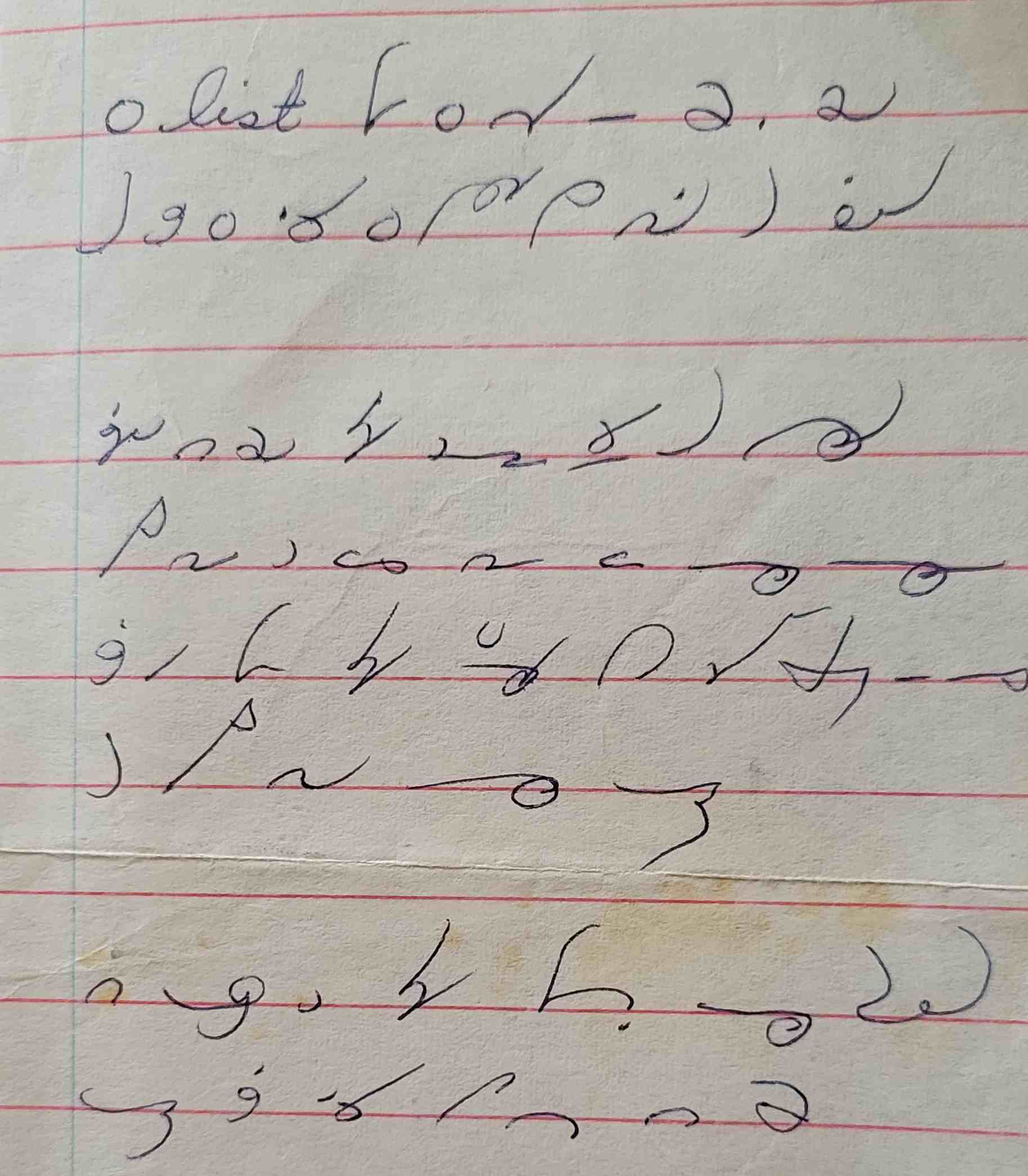I think this was written in the 1970s, but I’m not sure. The penmanship is mediocre, but it’s a good opportunity to practice reading shorthand written by other people of different skill levels. I’ve written the translation below, so don’t scroll down too far if you want to try translating it yourself first! (Some of these outlines I’m not entirely confident I’ve translated correctly, so please chime in if you have a different read) ….

TRANSLATION:
I list[ened] but I could not say a word
Even if I had I doubt that you would have heard
Yesterday you were just someone sweet and kind
Today you are is [sic] only one on my mind
Has it been just overnight this sudden change in me
For today you are my love
Your life is just beginning my friend
Love has had to go this way
Thanks for posting that. As you say it’s always good to see other writing. (Though I would not have been as kind as you — describing it as mediocre.) I am always glad to see that my writing is not quite the worst in the world.
I’m glad you gave a translation as I could only get a third of the words. Perhaps where you say “is[sic]” they wrote a “th” — writing in haste the brief form for “their” rather than “the”.
I agree. I’d call it “badly written Gregg”, although it’s not the worst specimen I’ve seen.
I don’t see “even” at the beginning of the second line . . . I think it’s “And”, based on the same shape in the third line.
Writing like this is a good example of why it’s sometimes impossible to help someone read their grandmother’s diary or recipe book. And it’s also a good reminder of why the Gregg publications always emphasized the importance of following the textbook model and developing good penmanship. Shorthand, unlike longhand, isn’t the place to express one’s individuality!
Lee
I think you’re right about “and” rather than “even”!
Something that I have noticed is that writers that learned shorthand in the 1950s and before tended to have better penmanship overall. I think this is a result of a penmanship teaching emphasis with more intensive drills in those days, both longhand and shorthand.
That’s true. I was in elementary school in the 1950s and 1960s, and “penmanship” was something that appeared on our grade cards.
By the time my kids were in school in the 1980s and 1990s, that had disappeared as a topic. Their handwriting instruction was minimal, and was based on the “D’Nealian” program, which really appeared out of nowhere and was widely marketed. Both of them, as adult professionals in their 40s, have nearly illegible handwriting now.
That’s not necessarily a problem in our era of keyboards and voice-to-text. But my daughter just told me a couple of weeks ago that someone where she works can’t read her handwriting on a document that requires handwritten entries . . .
The same “it doesn’t really matter how you write” attitude undoubtedly affected shorthand students as well.
Lee
I really appreciated seeing this post. While I am still a beginner and didn’t think I would be able to read too much of this I was able to read more than I thought. But I did find it hard to read. I found it hard to read ironically because it seemed the writer was trying *too* hard to write it correctly and it caused some of the writing to not look “almost right” which made it harder for me to interpret. Proportions and crispness counts for sure in shorthand.
I agree with Lee’s comment about penmanship and society. I grew up in the era of “good penmanship is important”. Unfortunately , my penmanship was poor most of my life. (It has gotten better in my adult age.) And as an aside to penmanship, I recently did have a young person ask me what language that was when she was given a note by someone (It was cursive. Fairly neat cursive at that).